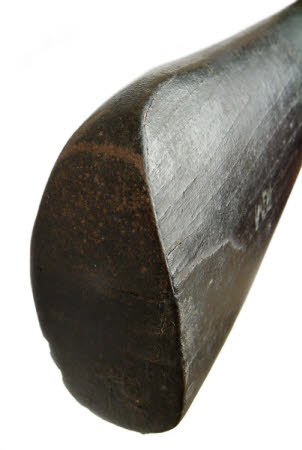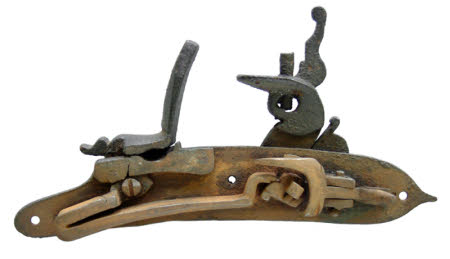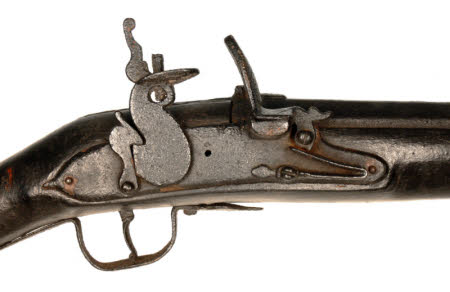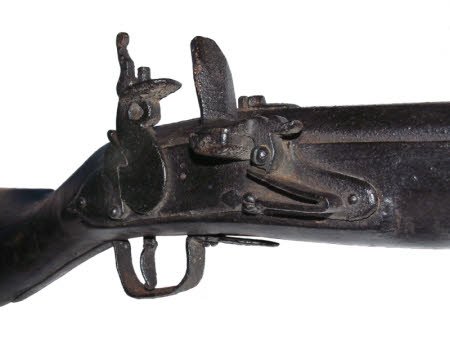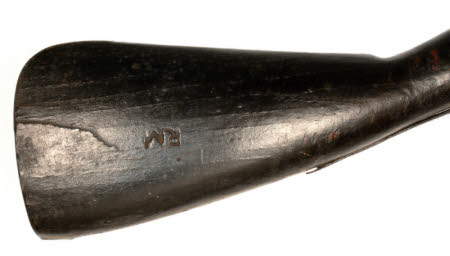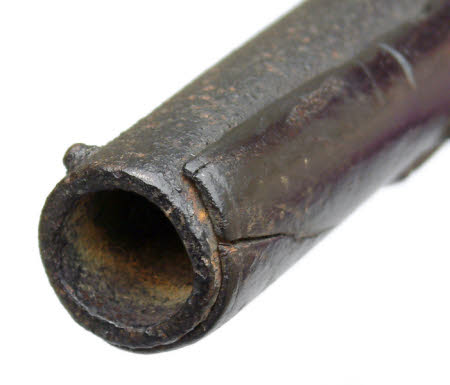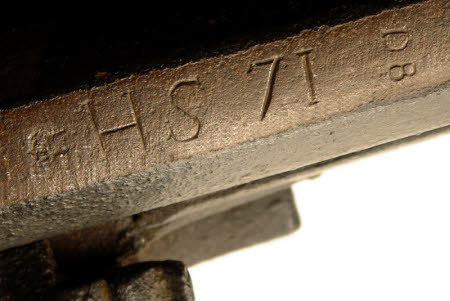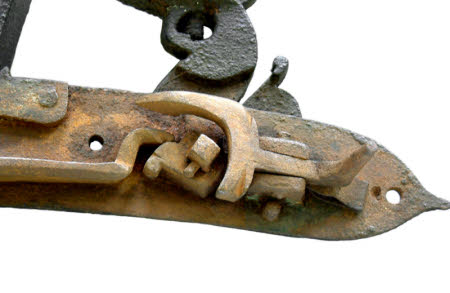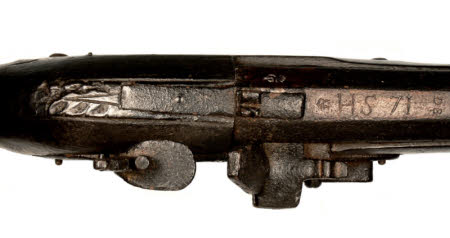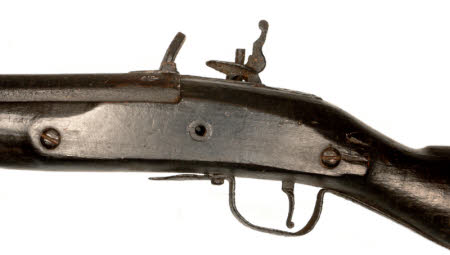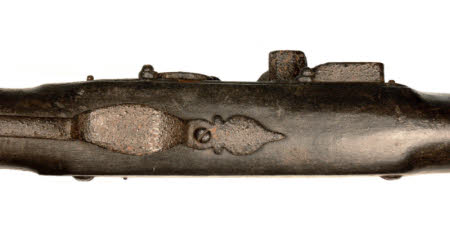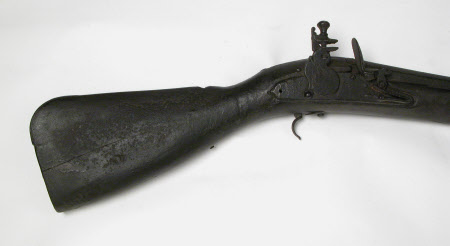Flintlock musket
Category
Arms and armour
Date
circa 1670 - circa 1680
Materials
Iron, wood and paint
Measurements
1450 mm (Length)
Order this imageCollection
Chirk Castle, Wrexham
NT 1170503.28
Summary
Gun. Flintlock musket. One of a collection of thirty eight English flintlock muskets, circa 1670.
Full description
The thirty-eight muskets at Chirk are of great importance and as so few have survived, they are an almost unique record of English military muskets from the mid-17th century. The muskets are all flintlocks, with a mechanism of a type that was only produced in England and not used after about 1680. They are the largest known surviving group of their kind. The majority of the muskets date to the period 1660 – 1680, although two muskets are from an earlier period, one from the 1620s, the other from the 1640s, the time of the English Civil War. The Castle account books record that Richard Myddelton purchased the muskets in about 1679 from London, in order to decorate the Cromwell Hall, as a celebration of his family's involvement in the Civil War. The records show that the muskets were not in pristine condition and required considerable repair, with some needing new stocks and other components to be replaced. This, together with their relatively low purchase price, confirms that the muskets were old or obsolete when they were bought. Certainly by 1685, a newer form of flintlock, which was cheaper and easier to produce, was soon replacing all other forms of the mechanism in England, including those for military firearms. Two muskets, dating from the 1660s, are exceptionally large and are considered to be "wall or rampart guns". They appear to be among the earliest surviving English guns of this type. Military flintlock musket, English, c1670. Modifications to the breech indicate that the barrel was originally used on a matchlock gun and certainly dates to an earlier period. Iron barrel, formed in 2 stages, octagonal at the breech, then round to the muzzle, separated by a turned moulding. Bead foresight and a raised rear sight. The breech struck with early London Gunmakers Company proof and view marks. The barrel also engraved with inscription HS 71 and the initials DB, together with an unidentified makers mark. Retained to the stock by 3 barrel pins. The ramrod missing. Barrel length: 105.7cm Calibre: 21mm. Wooden full stock with a club-form butt, slightly bellied and with a deep curve to upper section. Stamped on the right side of the butt with the ownership initials RM, and carved behind the barrel tang to represent a “corn-husk”. Iron furniture comprising; half-size butt plate, trigger guard and 2 ramrod pipes (1 pipe missing). English Lock flintlock (Type 2) with a flat, bevelled edge lockplate. Flat cock with reinforced ring neck, the rear with a V-shaped cut for the dog-catch. The top-jaw and the top of the jaw screw missing. The frizzen of thick form, narrowing towards the top. the back facetted; the frizzen spring with spear-shaped finial. Retained to the stock by 3 sidenails (centre screw missing). Overall length:145cm Brian Godwin, “The Chirk Castle Firelocks”, Canadian Arms Collecting Journal, Bloomfield, Canada, Vol.36, No.3, 1998. Brian Godwin, John Cooper & Michael Spencer, “The English Flintlock: Its Origins and Development”, 20th Park Lane Arms Fair catalogue, London 2003. Brian Godwin, “The Chirk Castle Firelocks – A Revisit”, Journal of the Arms & Armour Society, London, Vol.XVIII, No.6, September 2006. Brian Godwin, “English Firearms from the late 1500s to the English Civil Wars”, Royal Armouries Journal, Vol.10, No.1, Spring 2013, pp.51–70.
Provenance
Amongst the chattels that, in 1978, were acquired along with Chirk Castle from Lt-Col Ririd Myddelton (1902–1988) by the National Land Fund and handed, on loan for 99 years, to the Secretary of State for Wales. In 1981 Chirk was transferred into the ownership of the National Trust.
Marks and inscriptions
RM (branded)

